Happy New Year! For our first show of 2009, we take on your science questions. We find out how earthworms can get airborne, why people get cramp and why Dr Chris' hypnic jerk frightens people on the bus. We also listen to the flirtatious duet between two mosquitoes, find out how rocks are arranged on Mars, and how stem cells bring sight back to blind mice. Plus, we find out how to make indoor snow and explain why all of these snowflakes are identical, and in kitchen science Dave explains the science of sneezing on your computer screen!
In this episode
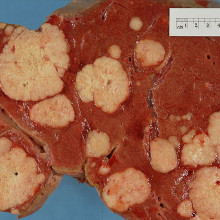
Sowing the Seeds of Cancer
Nine out of ten cancer deaths are due to tumours spreading from the original site, the primary tumour, to form secondary tumours in places like the lungs, liver or brain. Scientists call this metastasis. Now new research from scientists in the US, UK and Canada has revealed an important molecule called LOX is involved in metastasis, which could lead to new treatments for cancer.
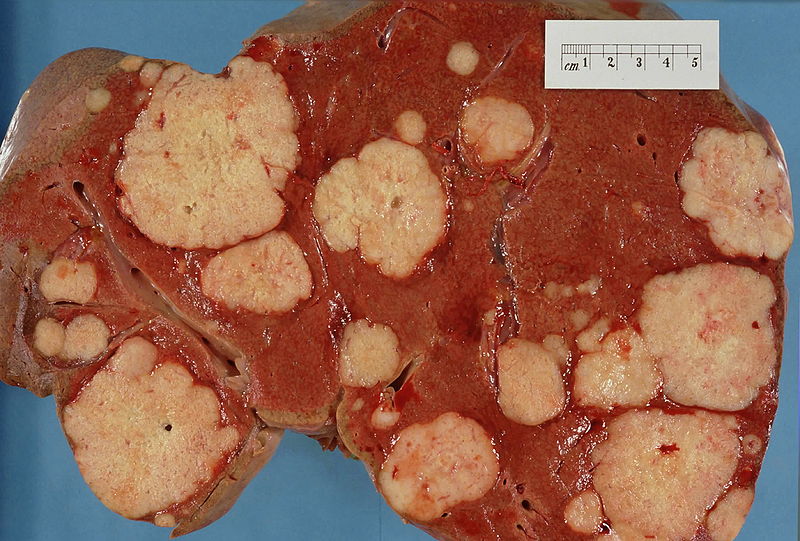 To explain why LOX is important, we need to go back a bit. Secondary tumours don't just spring up anywhere. In the same way that the ground needs to be right for a seed to grow, cancer cells need the right conditions. Back in 2005, scientists found that special cells move from the bone marrow into organs like the lungs, forming little bundles called pre-metastatic niches. And it's in these niches that spreading cancer cells grow.
To explain why LOX is important, we need to go back a bit. Secondary tumours don't just spring up anywhere. In the same way that the ground needs to be right for a seed to grow, cancer cells need the right conditions. Back in 2005, scientists found that special cells move from the bone marrow into organs like the lungs, forming little bundles called pre-metastatic niches. And it's in these niches that spreading cancer cells grow.
Now Janine Erler and her colleagues have found that a protein called LOX, or lysyl oxidase, plays an important role in forming these niches. LOX acts a bit like a craftsman, gluing together proteins that form the extracellular matrix - the jelly-like stuff that surrounds our cells. The researchers think that LOX glues together certain proteins, forming the right kind of environment to attract bone marrow cells, and therefore the right kind of environment for cancer cells to spread into.
Firstly, the team transplanted mice with normal breast cancer cells, or breast cancer cells that had been genetically manipulated so that they didn't contain any LOX. The scientists found that the mice carrying cancer cells without LOX had far fewer secondary tumours than those with the unchanged cancer cells. And the LOX-free cancer cells also failed to recruit bone marrow cells.
It seems LOX might also be important in human cancer cells. The scientists took 95 samples of secondary tumours taken from cancer patients, including people with breast, bowel, stomach and oesophageal cancers. And in more than half of the samples, there were high levels of LOX, and clusters of bone marrow cells.
So now that we know LOX is important for this process, scientists can start searching for drugs that might block its actions, which could potentially be used to treat cancer - or even stop it from spreading at all - in the future.

Strange forces on Martian rocks
The Spirit and Opportunity Mars rovers, which have recently celebrated their 5th anniversary on the red planet, seem to have discovered a strange force that is pushing rocks around the Martian surface.
 If you look at the photos of the Martian surface, it is strewn with small rocks ranging in size from pebbles to cobbles, but interestingly, none of them are touching. The rocks are all evenly spaced as if something was pushing them away from one another. The surface of Mars is very windy, but because the atmosphere is about a hundredth as dense as it is on Earth, the wind is nowhere near powerful enough to move this size of rock.
If you look at the photos of the Martian surface, it is strewn with small rocks ranging in size from pebbles to cobbles, but interestingly, none of them are touching. The rocks are all evenly spaced as if something was pushing them away from one another. The surface of Mars is very windy, but because the atmosphere is about a hundredth as dense as it is on Earth, the wind is nowhere near powerful enough to move this size of rock.
Jon D. Pelletier from the University of Arizona has worked out what is most likely causing this rock spacing, and it is an effect that will make sense to anyone who has every tried to dam a stream on a sandy beach.
If you put a rock in the stream, you may have noticed that the sand gets eroded away where the water is moving fastest - in front of and to the sides of the rock, where the water must accelerate to get around the blockage. If you leave the rock for long enough it will fall upstream into the hole that has been created.
Something similar appears to happen on Mars. If you have two rocks touching, the wind will be slowed between them but faster going around the opposite sides. This means that the wind will tend to move the sand they are sitting on from in front of the rocks, and deposit it between them. So like the stream eventually they will roll apart. This gives the appearance that the rocks repel one another and spread out, and no little green men are involved at all.

Stem cells for three blind mice
We're often talking on the Naked Scientists about research into stem cells, which could have the potential to treat many different ailments. This is because they can be persuaded to change into a wide range of cell types. Now researchers at the University of Washington in Seattle have used human embryonic stem cells to restore some sight, or at least light responses, to blind mice.
 The researchers were using mice that were lacking a gene called Crx, which means they are blind from birth as they don't properly develop photoreceptors, the cells that sense light. They grew human embryonic stem cells in the lab, and treated them with certain chemicals and growth factors that encourage the stem cells to change towards being retinal cells - cells found at the back of the eyeball.
The researchers were using mice that were lacking a gene called Crx, which means they are blind from birth as they don't properly develop photoreceptors, the cells that sense light. They grew human embryonic stem cells in the lab, and treated them with certain chemicals and growth factors that encourage the stem cells to change towards being retinal cells - cells found at the back of the eyeball.
Then the scientists injected these modified stem cells into the eyeballs of mice. They found that the cells settled into the back of the eye, forming organised layers. And when the cells were injected into the eyes of the Crx-deficient mice, they started to turn into photoreceptors. When the scientists tested the mice's responses to light, they found that these new photoreceptors had some response to light flashes, compared with eyes that hadn't been injected, which showed no response to light at all. And the eyes with the biggest areas of transplanted cells had the biggest responses.
The researchers also tested transplanting the modified stem cells into albino mice, whose photoreceptors are very sensitive to light and break down. The stem cells also integrated into the retinas of these mice, and were more resistant to breaking down than the cells that were already there.
This is exciting because it suggests that human embryonic cells could be a good replacement for damaged photoreceptors, and maybe in the future could be used to restore sight to people whose eyesight is damaged, or even to those who have been born blind.

16:08 - Making your own Aspirin
Making your own Aspirin
with Gwen Baxter, Dumfries and Galloway Royal Infirmary
Chris - Scientists in Scotland have discovered that humans and possibly many other animals make their own anti-inflammatory chemicals. The person who's made that discovery is Dr Gwen Baxter. She's from Dumfries and Galloway Royal Infirmary. She's here to tell us a little bit more about that. Hello Gwen, thank you for joining us. What are the Chemicals that you've discovered that humans make that are their own aspirin?
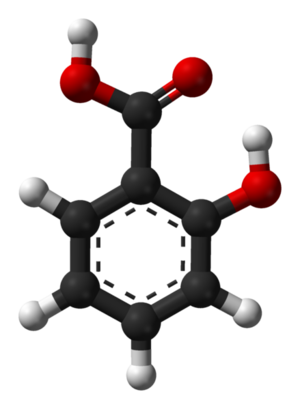 Gwen - It's linked to the finding that salicylic acid can be produced from benzoic acid which hasn't been reported in experiments before.
Gwen - It's linked to the finding that salicylic acid can be produced from benzoic acid which hasn't been reported in experiments before.
Chris - Tell us a little bit about salicylic acid. What is it?
Gwen - Salicylic acid's a very simple compound. It's been around for a long time. It's recorded as being used as a therapeutic agent from about 3000BC when it was used to relieve pain and as an anti-inflammatory agent, if you like and to help reduce temperatures in fevers.
Chris - If we have it in our body already, why do we need to take more of it?
Gwen - What we've discovered is that we seem to be able to produce it ourselves and that's a novel thing that we're reporting. Previously we had assumed it was something that people took in, in perhaps diet. Now we've found that it's produced in people.
Chris - What do you think it's actually doing in the people though?
Gwen - We're thinking it's a bit like considering your endorphins. I think people are familiar with that fact that they can be up-regulated. You can increase the amount circulating should you require to do so in times of stress. It's very close to thinking what happens to salicylic acid in plants. In plants it does act as a responder to stress such as attack by a pathogen. We're saying that humans are possibly in a position to do that same thing because we have shown that we can produce it.
Chris - You can make the same stuff from aspirin. In fact, when you put aspirin into the body it eventually turns into salicylic acid. Do you think that what you've discovered is basically the way in which aspirin or part of the way aspirin works is achieved?
Gwen - Well, I think that if we just go back a wee bit that salicylic acid was used for the things that aspirin is used for. The effect aspirin has on platelets and stops them sticking together which is a therapeutic use of aspirin that salicylic acid doesn't have in the same way although it does act as an anti-inflammatory. More recently it has become involved as the original agent itself, if you like.
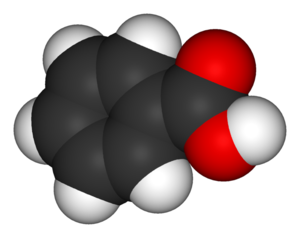 Chris - How do you get the salicylic acid made in the body and does everyone make it and do some people make it more than others?
Chris - How do you get the salicylic acid made in the body and does everyone make it and do some people make it more than others?
Gwen - That's another interesting thing. We've done lots of work over the years with people who would have salicylic acid in their body because they perhaps eat it so obviously vegetarians do have higher levels. No surprises there. We've also looked at people who have been fasting and they still maintain it so obviously it's not coming from diet which was the starting point of 'where is it coming from?' We're thinking that if we can find the store for it - it must be somewhere in the body or some precursor such as benzoic acid, which is a product of lots of other metabolic pathways that we have already recorded in our body - it can be used as a bio-regulator and help with some gene protection. As for, 'does everybody make it?' Well, we'll have to find that out. Certainly, in our work we've discovered that not everyone can metabolise the salicylic acid. Perhaps there is a relationship there to do with gene expression. I think the bottom line there is that it regulates biological systems and a lot of people are working on how small amounts of salicylic acid can modulate gene expression. It may be that if you're good at making it you're protected better than people who can't.
Do we give out 'flirty' frequencies?
Chris - Yes we do, because we speak to them. Scientists have shown that men who have deep voices tend to be more attractive to women who fancy men, obviously. Voice is down to the level of testosterone - the more testosterone you have the lower your voice and so it can be a sign of a well-testostero-genised man. Also there was a study recently that showed women who are at their peak fertility tend to use higher tones in their voice than at other times of the month. Women speak with a high pitch when they're more fertile. This is maybe another subtle clue that women are using to give away their fertility to men.
Can earthworms fly?
Kat - This is an interesting one but my prime suspect in this case would be birds. There is some evidence that worms can crawl but I doubt that big earthworms can crawl that far. I reckon that a bird has got mud on its beak or is maybe carrying another earthworm that's got mud on it that's got tiny earthworm eggs and they've got deposited up there. It's a nice environment, it's nice and damp. If you've got soil, organic matter up there then those dropped worm cocoons, the eggs in a bundle have started to grow. I reckon they've been dropped up there by birds. Chris - I agree because when I was little I got into trouble with my parents for putting a worm in my brother's hair which I absolutely did not do. Because he reached into his hair and found a worm and got told off for it. Actually a bird had just gone over and I think a bird dropped the worm on my brother's head. I didn't do it honest.

Why does a bike stay up more easily when it's moving?
Dave - It is very hard to balance when a bike's stationary. There's two effects. One of them is if you tip a bike to the left you'll see the front wheel tends to turn into the left as well because the front forks are leaning forwards. It's more stable if the handlebars tip to the left. Once the handlebars tip to the left then you tend to steer into the corner and the wheel works its way back underneath you.
Chris - So it's like if I give you the old trick of a broom handle you can balance the broom handle in the palm of your hand. Just by moving your hand around you can hold the broom handle vertically. It's because when the broom starts to fall in one direction you can move your hand to go effectively into the direction of fall and that's what keeps it stable. The bike's doing the same thing.
Dave - The bike's doing the same thing automatically. There's also a gyroscopic effect that can help.
Chris - Because the wheels are spinning and so because the wheels themselves are turning they have a gyroscopic moment. It's obviously difficult to make it deviate. Given that it's most unstable when it's moving slower you can still balance. You probably get more stable when you speed up?
Dave - You do and it's easier to ride when you're going faster. If you imagine a spinning top it starts to fall over it starts to rotate round and round in circles and the same thing starts to happen to your bike wheel. As you start to turn over it starts rotating and turns into the corner as well.

How do clouds form electricity for lightning?
Chris - The answer is we don't 100% know.
Clouds are made of billions of tiny particles, ice crystals. They're called hydrometeors and these particles rub against each other in the cloud because the clouds are full of big currents of air. There are big ones and small ones.
In exactly the same way as if you take a balloon, or a comb, and run it through your hair it will transfer charge from one thing, your hair, to the balloon or comb, this enables you to have static electricity. The same thing happens with these particles in a cloud.
By a mechanism that no one understands that well, for some reason the big hydrometeors get a negative charge and the small ones get a positive charge. The small ones get pushed to the top of the cloud on upcurrents more than the bigger ones. That's how you get this distribution of charge within the cloud.
Some people speculate it might be something to do with the solar wind which is this charged stream of particles coming from the sun, past the Earth's magnetosphere. That aside, what you end up with is a big aggregation of static energy within the cloud which is separated, according to its charge. The bottom of the cloud is very negative.
The Earth, therefore, feels an electric field pushing towards it and this repels negative charge in the surface of the Earth, because the negatives can move away, leaving the surface of the Earth net positive.
This intensifies the electric field and the result is that eventually the potential difference that builds up between the cloud and the ground overcomes the natural insulation or the inherent resistance of the air and it begins to ionise. This is where you strip electrons away from gas molecules in the atmosphere and because electrons can move they can conduct.
You begin to carry a current and so you get a few "feelers" come down. When you've got a sufficient and contiguous connection between cloud and ground you'll get a full-on strike.
The lighting comes zipping down. The actual discharge is only about the size of a five pence piece and it lasts for a billionth of a second, microseconds at best.
The actual current that flows down it is something like 20,000 Amps and it's discharging between 1 and 10 billion joules of energy which is, in fact, enough to light a 100W bulb for 100 days.
It's not a huge amount but is enough to make a big bang. The reason that the lightning's nice and bright is that, as the electricity goes smashing though the air it causes the electrons in the atoms to get very excited. They then fall back to their original energy positions, giving us some light in the process. They also get very hot and because of the thermal expansion you get a shockwave. It's like a gun going off.
Why do you get white blooms on refrigerated chocolate?
Kat - I've been doing a life time of research into chocolate and yes, you're right. Bloom on chocolate this kind of white stuff you see in it is not harmful. You get two types of bloom on chocolate. You get cocoa butter bloom which is when the cocoa butter comes to the surface of the chocolate. You can tell if you've got cocoa butter bloom because it kinda feels a bit oily and greasy. You can get sugar bloom and that's when sugar crystals come out of your chocolate and that feels kind of granular. What's causing it? Well, chocolateers think that what causes bloom is when you get temperature changes, big changes in temperature to chocolate. As it's been hot in Australia and now you've put your chocolate that's been in the fridge to keep it cold you've put it through quite a big temperature differential and then got it back out of the fridge again. That's caused the bloom. It's probably best to keep your chocolate at a cool, stable temperature - not necessarily in the fridge.

31:15 - Indoor Snow
Indoor Snow
with Richard Shears, Milton Keynes SNO!Zone
Yes, it is the season that many of us decide to go skiing to various resorts around the world. But this week we're at a place you can ski all year round; it's in the UK and also indoors! It is the Milton Keynes SnoZone, part of the Xscape Leisure complex in Buckinghamshire. There are 3 snow slopes, two which are up to 173 metres long and 20 metres wide. The best bit is that all of these slopes are actually covered with real snow. So what does it take to create the snow that's in here and fill basically a big dome like this with tonnes and tonnes of snow? Meera Senthilingam spoke with Richard Shears, who's the facilities manager at Snozone...
Richard - The temperature here at the moment, Meera, is -2, -3 degrees. Up above us are some large radiators. Within the radiators there are six large fans. These large fans blow air across a radiator and the radiator is cooled down to -16 degrees with an antifreeze mixture inside it. When we're running at full capacity with 100% fans we'll it down to probably -6 degrees. That's the temperature that we make the snow.
Meera - Can you describe the actual structure here of the slope?
Richard - Underneath the snow is a large concrete slab stretch from the base of the slope, right up to the top. The concrete slab is covered with an insulating material and on top of the insulating material is lines of 20mm pipes. These 20mm pipes contain the antifreeze mixture which is cooled down to -16 degrees. Each time we run water over the pipes it freezes and gives us a depth of ice down to 30-40mm thick of ice. We have an ice layer under the snow.
Meera - To find out how the snow's actually made we're going to head up to the snow bar which is on the second floor and looks out over the snow slopes so we can actually see the sprayers that the snow is created form. Let's head up there now because I can't feel my fingers at the moment!
Now Richard, you create up to 1500 tonnes of snow here, all with these sprayers that seem to be located at different positions around the room. How do these actually go about creating the snow?
Richard - The snow's created by using high-pressure water and air which runs through what we call a snow gun. The water and the air are broken up into fine particles and then blown out at high pressure into the atmosphere of the ski box. When the mixture hits the atmosphere it freezes into a fine mist which lands onto the ground, which forms real snow.
Meera - What other conditions need to be maintained to get the maximum snow created here?
 Richard - During the night we can drop the temperature of the ski box to -6/-7 degrees. Providing the humidity is right within the box we can make the snow that temperature. Obviously the higher you can drop the snow from the snow guns the longer it has to form, the better the snow can be made.
Richard - During the night we can drop the temperature of the ski box to -6/-7 degrees. Providing the humidity is right within the box we can make the snow that temperature. Obviously the higher you can drop the snow from the snow guns the longer it has to form, the better the snow can be made.
Meera - How does this compare to the snow we get outside? Is it the same?
Richard - The structure of the snow is a little bit different where you have nice snowflakes outside and they'll probably fall 30,000 feet. We're falling from 40-50 feet. The ice crystal doesn't have that time to actually form. Outside every snowflake that your get is different. If you put them under a microscope you'll see the shape is different. In the snow we get here, because it's a controlled environment it's an ice crystal that comes out but they're all formed in the same structure.
Meera - What do the actual crystals look like? Are they quite spherical then?
Richard - Yes, they're round. If you put them under a microscope they're all uniform. They're all round.
Meera - We've been talking so much about snow and I can see all these skiers in front of me that I really need to go and try it out for myself....
Why does one get cramp?
Chris - Cramp is a muscle spasm and we don't actually know what cramp is. We just know that if people have regular cramps - and it tends to happen quite often at night and it tends to happen in younger people more often than older people and it tends to be relieved with quinine, the same stuff that makes tonic water taste nice. A muscle spasm is when some of the muscle fibres - because a muscle isn't just one homogeneous giant thing. It's actually made up of lots of individual little muscle fibres. Some of those muscle fibres go into a spasm. In other words, the contract more than they should and they lock in a contracted state. Surprisingly, muscle actually takes energy to relax, not to contract. When a body of a person dies, they go into rigor mortis because the cells in their muscles run out of energy and their muscles can't relax and they stay rigid. That's why a person gets rigor mortis. If you leave them a bit longer then the rigor mortis goes away again when the muscle breaks down and starts to relax. What cramp could be is for some reason that clutch of muscle fibres don't have enough energy in them, perhaps because there's been a reduction in blood flow that's insufficient for the muscles needs. Therefore the muscle runs a little bit short of energy and this trips its inability to relax properly and you get a cramp. Rubbing a muscle and massaging it to get the blood through it can make it better.
Zanzibar Rothschild, in Second Life - Bananas are good for cramps. Could it be down to potassium?
Chris - could be but I don't know for sure. I know that if you don't have enough potassium then you can end up with excitable cells in that way and this can lead to muscle spasms so that's a possibility.
Why does my car windscreen mist up only when it rains?
Dave - What's happening when your car windscreen mists up is you've got lots of moisture in the air inside your car. If the car windscreen is cold enough then it will be below the dew point and below the temperature at which water can condense on it. You will get condensing on the windscreen until eventually you get little droplets making it hard to see through. There's various things which will affect this. One of them is the amount of moisture in the air. If you've got rain it's very humid and you're probably wet. You're probably heating up water and it's evaporating off you so it makes the air very moist. The other big one is how cold the glass is. If it's raining then rain's probably hitting the glass, taking a lot of the energy out of it and cooling it down. Probably two reasons: one is that there's more moisture in the air and the other is that it's cooled down.
To try and stop this from happening, you should try this Kitchen Science Experiment! - http://www.thenakedscientists.com/HTML/kitchen-science/exp/stopping-fogg...
What are the spasms that occur as you fall asleep?
Chris - I think what you're thinking of is a hypnic jerk. When people fall asleep and you can notice this yourself you suddenly jerk violently. Often enough to wake you up again and certainly anybody who'e sleeping next to you. If you're on a bus with someone and you don't know them it scare the hell out of them because I've done that to people. This is a hypnic jerk and it's to do with the part of the nervous system that paralyses you when you go to sleep. When we go to sleep and we dream you don't want to be acting out your dreams because that could have unfortunate consequences. There's a region of the nervous system called the sub-cerulean nervous system in your brain stem which receives information about when you're going to dream and it also has the ability to switch off the flow of motor systems going down to your spinal cord. It can paralyse your body when you're going to sleep. When you're switching in this system, sometimes it gets a bit carried away. You get these jerks as the system is turning on.

Why do rockets not 'burn up' on the way up?
Dave Ansell answered this question...
Dave - The amount of heat you're generating is all to do with how fast you're going and how thick the atmosphere is. The thicker the atmosphere, and the faster you're going, the more heat you generate.
Although space rockets can go several times the speed of sound, they do get some heating on the way up. It's not that much because they're going fairly slowly while they're near the ground where the air's fairly thick. But they get faster up in the much thinner air, but there the thinner air means the heating effect is weaker.
On the way down, they're going really fast. As the air gets thicker, they've still got lots of energy.
Chris - The escape velocity's 13-14,000 miles an hour or something ridiculous, isn't it? They have to have a way of dissipating heat?
Dave - They can't dissipate all that energy in the upper atmosphere. They have to dissipate it lower down, which is why they get hot...
Why is urine yellow?
Chris - The yellow colour is because of the stuff that makes your blood red. When we break down red blood cells which last about 120 days the haemoglobin makes a protein which has a iron atom at the centre. That protein gets broken down into something called bilirubin. Bilirubin is dumped out of the body by the liver. The liver metabolises the bilirubin bit by adding sugar to make it dissolve in water, puts in bile and your bile then gets squirted into your small intestine to help it reabsorbs fats. The bilirubin, because it has sugars stuck on it becomes broken down by bacteria. The bacteria metabolise the molecule and they turn it into something which is called urobilinogen. Urobilinogen gets reabsorbed further down the small intestine. Unlike bilirubin, which is not very soluble in water urobilinogen is very soluble but it's a brown colour. The urobilinogen goes round the blood stream again but when it goes round in your blood stream again but when it goes through you kidney, because it's soluble in water, it moves out through the kidney in the same way as the other things that go into urine do and it goes into your urine. Because your urine is a concentrate of plasma you take water back but leave the products that have got filtered behind and it builds up in the urine and adds this brown colour. So urine goes darker and darker. The more dehydrated you are the darker it is because the concentration is higher. Kat - It may be a bit of it's riboflavin as well because if you take a lot of B vitamins you just wee them out. I think, riboflavin, when it's dissolved in water is very yellow as well.
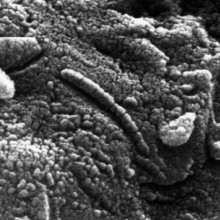
44:47 - Life from Outer Space?
Life from Outer Space?
We put this to Dr Vic Pearson from the Open University:
The likelihood of finding life in meteorites is probably pretty slim. There was, in the 1990s, a big debate on whether or not NASA scientists had identified nanobacteria, so very small bacteria only identifiable using very powerful microscopes in meteorites that had come from the surface of Mars. This has pretty much been debunked now. That's not to say that the building blocks of life may not have been brought in meteorites because meteorites themselves contain biogenic elements such as sulphur, nitrogen, phosphorous. Also, carbon-based molecules or organic molecules which are required for life on Earth and elsewhere in the solar system: these are things such as amino acids, carboxylic acids, sugars - all of which make up living systems on the Earth and all of which are the backbone of the organic molecules that make up our own DNA. The chances of being able to find life elsewhere in the solar system is also a lot stronger by the fact you can find the organic molecules. Whether or not you can actually get life itself from meteorites is probably very unlikely.
Does my iPod get heavier as I add more music to it?
Dave - The only way that actually adding music to your iPod could increase its mass could be if you were somehow increasing the energy of it. The way modern iPods tend to store music is in what's called flash memory. This has lots of tiny cells inside it. You tend to trap the electrons, maybe a few hundred electrons in the little gap. That affects how current will flow through a wire until you can read it again. This is going to store some energy and maybe a miniscule amount. Probably 1/1000th of a joule at most inside your iPod. That's for the 1s so the 0s wouldn't store any energy - so half of that. According to E=MC2 it will increase the mass ever so slightly. That's a tiny amount but that's far less that the increasing mass. Perhaps when you charge up the battery but that's less than the mass of a greasy fingerprint you put on top of it.
Chris - So the answer is yes if you put some energy into the iPod - if whatever you do to it means it gains some energy because Einstein says E=MC2 it has to go into mass but the amount is going to be tiny.
How long can cancers grow before detection?
Kat - Absolutely not at all. Then screening wouldn't work. Things like the breast screening and the bowel screening that we have now. Some cancers, yes, they are advanced and that's why the government's trying to do a lot through an initiative called the early detection and awareness initiative to try and catch cancers earlier. Bowel cancers you can spot them when they're just a little polyp. You can take them away and cancer will not have grown anywhere. In the case of breast cancers, breast screening picks up very small tumours that really haven't spread far so it's not necessarily true for all types of cancers that they will have spread around the place. Chris - Could she mean that cancer's a multistage process where you slowly build up and acquire changes of your DNA which eventually mean you get cancer and you could have spent a lifetime building up those changes? Kat - That's kind of true because we do pick up all kinds of damage to our DNA just in the hurly burly of life within our cells. Cancer is a disease that usually takes a very long time to happen. There is also and idea that we do, everyone has tiny cancers all over us but it's our immune system that's constantly patrolling our bodies and keeping these under control. What happens when cancer really starts to grow is that it started to evade this immune suppression and really start going for it. There's a lot we don't understand about how cancer really gets going.

Why do we get goosebumps when we're scared?
Chris - Goose bumps or goose pimples are the bulges produced by your piloerector muscles. These are the muscles that can make your hairs stand on end. In other animals like mice, cats, dogs; making your hair stand on end is a good thing. If you're cold you trap more air next to your body and it thermally insulates you. If you're scared it makes you look much bigger. If you look much bigger then you're scary to other animals and they're less likely to attack you. We're obviously derived and related to all these other mammals that do this but have less hair. It doesn't serve a useful purpose in us, it's just a sort of evolutionary vestige.
- Previous Vacuum Bazooka
- Next Meteoric Life Forms










Comments
Add a comment